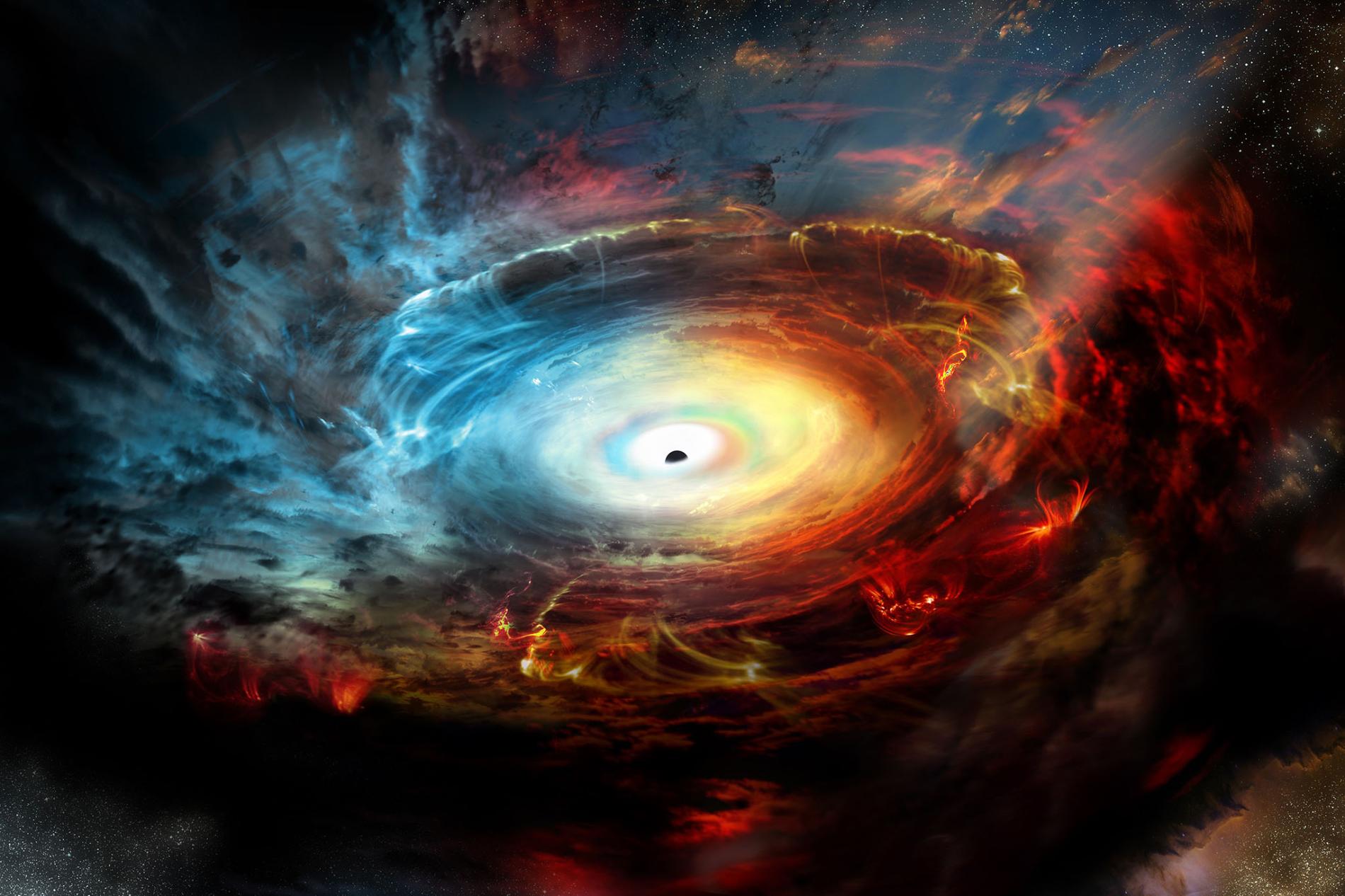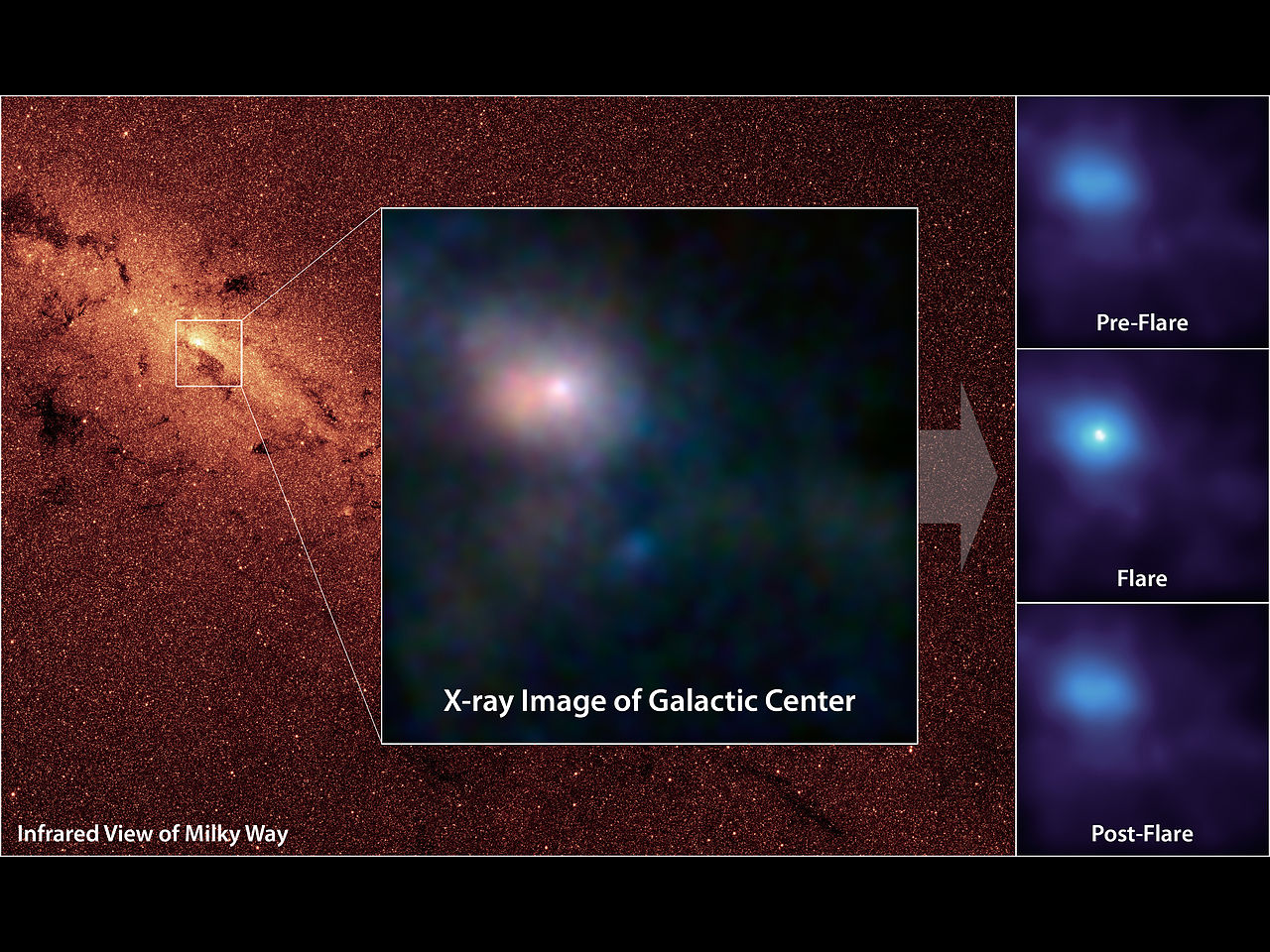Eight telescopes on four continents and Hawaii collaborated for five nights to take the first ever photo of the black hole located in the middle of The Milky Way.

Project ‘Event Horizon Telescope’ (EHT) is a collaboration between more than 30 universities and research institutes. They directed eight radio telescopes in North and South America, Europe, Hawaii and Antarctica towards the center of Miky Way for five nights in April.
Some 50 astronomers from around the world used high-frequency radio telescopes on four continents: The ALMA and the Atacama Pathfinder Experiment in Chile; the Large Millimeter Telescope in Mexico; the Submillimeter Telescope in Arizona; the Submillimeter Array and the James Clerk Maxwell Telescope in Hawaii; the IRAM 30-meter telescope on Pico Veleta in Spain. A crew wintering over in Antarctica, whom EHT astronomers trained months earlier, would operate the South Pole Telescope.
Earth-size mirror
The larger the telescope mirrors, the higher the resolution. Project EHT eight telescopes used in together form a mirror that is as big as the Earth.
“Instead of building a telescope so big that it would probably collapse under its own weight, we combined eight observatories like the pieces of a giant mirror,” “This gave us a virtual telescope as big as Earth — about 10,000 kilometers (6,200 miles) is diameter,”
– Michael Bremer told AFP.
Bremer is an astronomer at the International Research Institute for Radio Astronomy (IRAM) and a project manager for the Event Horizon Telescope.
Event horizon
The event horizon is the “points of no return” border around a black hole. Everything that passes the event horizon will fall and never return. A black hole has such strong pulling power that even light cannot escape.
The British astronomer Stephen Hawking has famously compared crossing this boundary to going over Niagra Falls in a canoe: if you are above the falls, it is still possible to escape if you paddle hard enough.
Once you tip over the edge, however, there’s no going back.
The event horizon constitutes a boundary in spacetime beyond which events cannot affect an outside observer. Therefore, it’s impossible to see beyond the event horizon or what’s inside the black hole. But it is possible to observe the near vicinity of the black hole, what the astronomers call the black hole shadow.
Shadow of Sagittarius A
This shadow is not dark, however. When black holes feed, they toss the food around, a lot. As gas, dust and cosmic material approach a black hole, it heats up millions and millions of degrees. They also bend the entire space around them and since their gravity is so strong, it acts as a lens.
The black hole found in the middle of the Milky Way, Sagittarius A, is 26,000 light years away, weigh about four million times more than the sun. But the event horizon has a radius that is only about half the distance between the sun and the planet Mercury.
The raw data are now being shipped on physical hard drives to EHT’s two supercomputers, at the Massachusetts Institute of Technology, MIT, in Boston, USA, and the Max Planck Institute for Radioastronomy in Bonn, Germany. These computers will combine the observational data to get a picture of the black hole’s shadow. A process that might take several months according to the researchers.

Proving Einstein right
Everything we know about black holes comes from the general theory of relativity, that Albert Einstein formulated more than 100 years ago. The Event Horizon project will make it possible to investigate a black hole closer and take a first picture of the shadow of a black hole.
According to research team member Heino Falcke from Radboud University in Nijmegen in the Netherlands, even if the first images are grainy and washed out, it still allows astronomers to test some basic predictions of Einstein’s theory of gravity near a black hole for the first time.
Discrepancies may be found between the theory and actual observation or, if there are no discrepancies relativity may be confirmed.
Reference:











![OpenAI. (2025). ChatGPT [Large language model]. https://chatgpt.com](https://www.illustratedcuriosity.com/files/media/55136/b1b0b614-5b72-486c-901d-ff244549d67a-350x260.webp)
![OpenAI. (2025). ChatGPT [Large language model]. https://chatgpt.com](https://www.illustratedcuriosity.com/files/media/55124/79bc18fa-f616-4951-856f-cc724ad5d497-350x260.webp)
![OpenAI. (2025). ChatGPT [Large language model]. https://chatgpt.com](https://www.illustratedcuriosity.com/files/media/55099/2638a982-b4de-4913-8a1c-1479df352bf3-350x260.webp)








